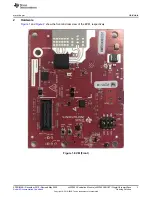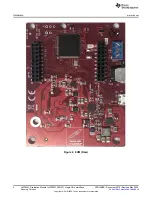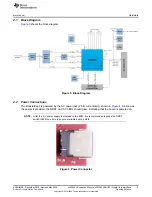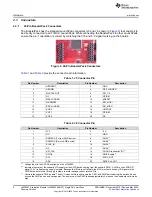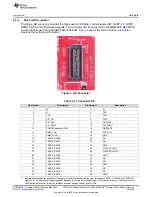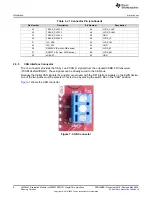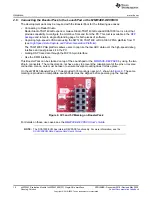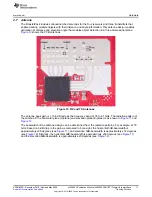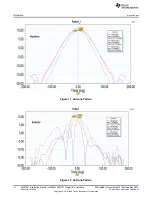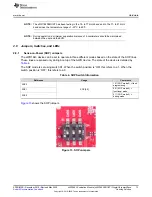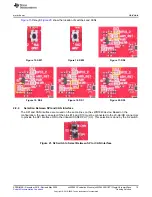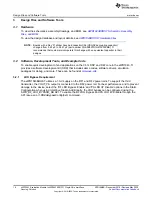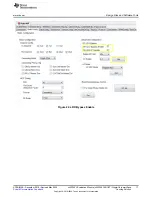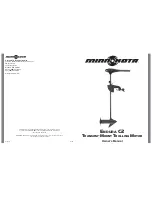
Getting Started
2
SPRUIM4B – December 2018 – Revised May 2020
Copyright © 2018–2020, Texas Instruments Incorporated
xWR1843 Evaluation Module (xWR1843BOOST) Single-Chip mmWave
Sensing Solution
1
Getting Started
1.1
Introduction
The xWR1843 BoosterPack from Texas Instruments is an easy-to-use evaluation board for the xWR1843
mmWave sensing device, with direct connectivity to the microcontroller (MCU) LaunchPad Development
Kit. The BoosterPack contains everything required to start developing software for on-chip C67x DSP core
and low-power ARM R4F controllers, including onboard emulation for programming and debugging as well
as onboard buttons and LEDs for quick integration of a simple user interface.
The standard 20-pin BoosterPack headers make the device compatible with a wide variety of TI MCU
LaunchPads and enables easy prototyping.
1.2
Key Features
•
Two 20-pin LaundPad connectors that leverages the ecosystem of the TI LaunchPad
•
XDS110 based JTAG emulation with a serial port for onboard QSPI flash programming
•
Back-channel UART through USB-to-PC for logging purposes
•
Onboard antenna
•
60-pin, high-density (HD) connector for raw analog-to-digital converter (ADC) data over LVDS and
trace-data capability
•
Onboard CAN-FD transceiver
•
One button and two LEDs for basic user interface
•
5-V power jack to power the board
1.3
Kit Contents
The following items are included with the xWR1843BOOST kit.
•
xWR1843 evaluation board
•
Mounting brackets, screws, and nuts to place the printed-circuit board (PCB) vertical
•
Micro USB cable to connect to PC
NOTE:
A 5-V, > 2.5-A supply brick with a 2.1-mm barrel jack (center positive) is not included. TI
recommends using an external power supply that complies with applicable regional safety
standards, such as UL, CSA, VDE, CCC, PSE, and more. The length of the power cable
should be < 3 m.
1.3.1
mmWave Proximity Demo
TI provides sample demo codes to easily get started with the xWR1843 evaluation module (EVM) and to
experience the functionality of the xWR1843 radar sensor. For details on getting started with these demos,
see
.



